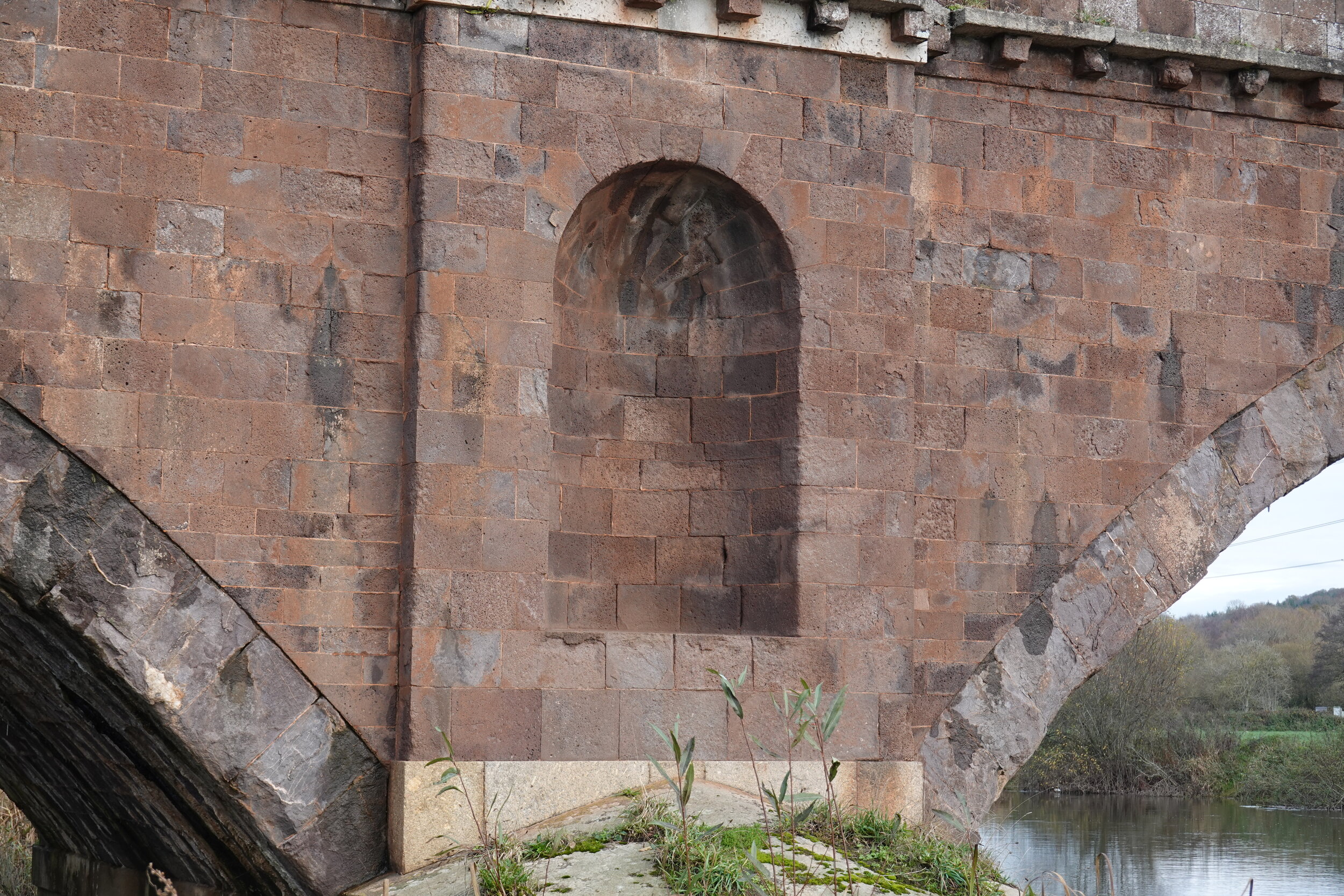A PDF version is available here.
25 years I have lived in Exeter and for the first time I got up close to Cowley Bridge. This week I had occasion to. It’s a rather grand bridge, designed by James Green, the first County Bridge Engineer of Devon in 1808. Green was a pupil of John Rennie and built the first large span bridges in Devon.
The spans at Cowley, 50, 55 and 50 ft were the biggest over the Exe at the time.
Here we can see the general form, the different stones, and the detailing.
The first thing I noticed on my visit was this crack over the western pier. It looks worthy of note but not a sign of real damage.
Some of these colour differences are changes due to weathering, others are different stones. The pale stripe on the pier top is Portland.
The piers are of granite, the better to resist the effects of the river.
The arch is a stronger basalt, veined with calcite or dolomite, possibly from a quarry at Crossmead at the western edge of Exeter. It doesn’t seem to take well to runoff from the stone above which is the volcanic Trap, available from various quarries in the neighbourhood. This is probably from Rougemont.
Those big slabs are demanding of the quarry. The two courses below seem to be the same as the stone below, where those over the pier seem quite different.
On the north side, the weather has had a go at the wall stone somewhat.
A broader view suggests that the spandrel might be tilting out but I think it is just erosion of the voussoirs.
No sign of a crack in the niche on the north, but is that a step in the arch above?
A closer look says no, just more weathering.
The vegetation on the northern cutwater is quite something. I suspect that the surface is flat enough for soil to deposit when the river is high. With the natural drawdown through the width, it is likely that the river covers this side when it doesn’t cover the other.
The vegetation on the northern cutwater is quite something. I suspect that the surface is flat enough for soil to deposit when the river is high. With the natural drawdown through the width, it is likely that the river covers this side when it doesn’t cover the other.














